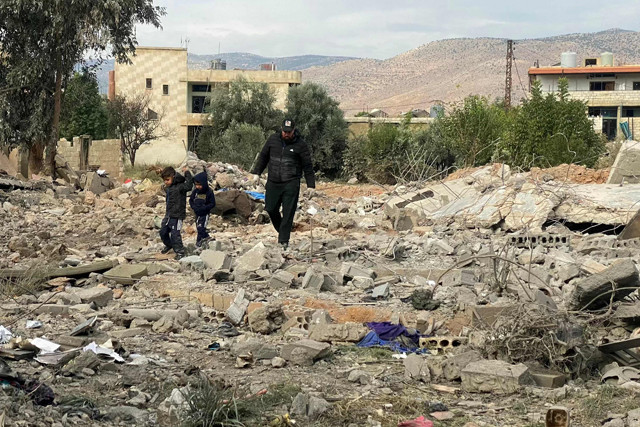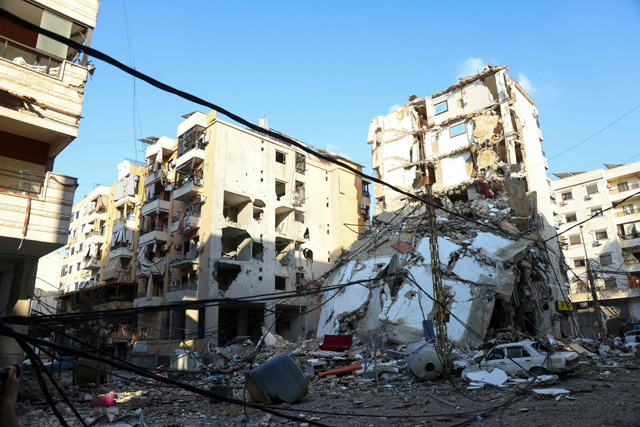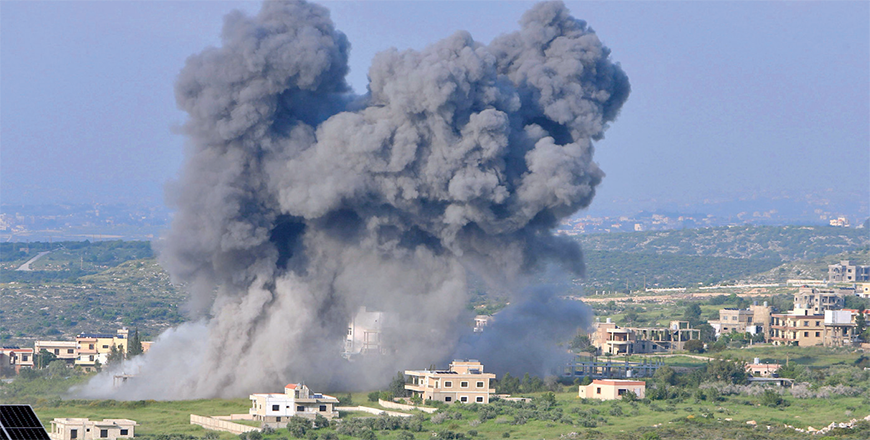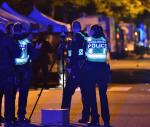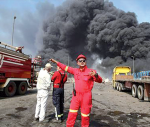You are here
War reaches Lebanon's far north after rare, deadly Israeli strike
By AFP - Nov 12,2024 - Last updated at Nov 12,2024

Rescue teams work at the scene of an Israeli airstrike that targeted a house where displaced people lived in the village of Baalshmay in the Lebanese mountains, east of Beirut, on Tuesday (AFP photo)
AIN YAACOUB, Lebanon — A day after Israeli warplanes flattened their building, Lebanese residents helped rescuers scour the rubble for survivors, still reeling from the rare strike in the country's far north.
The bombing killed at least eight people in Ain Yaacoub, one of the northernmost villages Israel has struck, far from Lebanon's war-ravaged southern border.
"They hit a building where more than 30 people lived without any evacuation warning," said Mustafa Hamza, who lives near the site of the strike. "It's an indescribable massacre."
After nearly a year of steady cross-border fire, Israel intensified its attacks on Hizbollah in September, mainly targeting the Iran-backed group in its strongholds of south Beirut and eastern and southern Lebanon.
Following Monday's strike on Ain Yaacoub, residents joined rescuers, using bare hands to sift through dust and chunks of concrete, hoping to find survivors.
The health ministry said the death toll was expected to rise.
On the ground, people could be seen pulling body parts from the rubble in the morning, following a long night of search operations.
In near-darkness, rescuers had struggled to locate survivors, using mobile phone lights and car headlamps in a remote area where national grid power is scarce.
'People are shocked'
For years, Syrians fleeing war in their home country, along with more recently displaced Lebanese escaping Israeli strikes, sought refuge in the remote Akkar region near the Syrian border, once seen as a haven.
"The situation is dire. People are shocked," Hamza told AFP. "People from all over the region have come here to try to help recover the victims."
The village, inhabited mostly by Sunni Muslims and Christians, lies far from the strongholds of Hizbollah, a Shiite Muslim movement.
A security source said Monday's air strike targeted a Hizbollah member who had relocated with his family to the building in Ain Yaacoub from south Lebanon.
Local official Rony Al Hage told AFP that it was the northernmost Israeli attack since the full-blown Israel-Hizbollah war erupted in September.
After Israel ramped up its campaign of air raids, it also sent ground troops into south Lebanon.
"The people who were in my house were my uncle, his wife, and my sisters... A Syrian woman and her children who had been living here for 10 years, were also killed," said Hashem Hashem, the son of the building's owner.
His relatives had fled Israel's onslaught on south Lebanon seeking a safe haven in the Akkar region more than a month ago, he said.
Hizbollah operatives
The Israeli war on Lebanon has displaced at least 1.3 million people, nearly 900,000 of them inside the country, the United Nations migration agency says.
Israeli strikes outside Hizbollah strongholds have repeatedly targeted buildings where displaced civilians lived, with Lebanese security officials often telling AFP the targets were Hizbollah operatives.
On Sunday, Lebanon said an Israeli strike killed 23 people, including seven children, in the village of Almat -- a rare strike north of the capital.
Earlier this month, authorities said an Israeli strike on a residential building killed at least 20 people in Barja, a town south of Beirut that is outside Hizbollah's area of influence.
The war erupted after nearly a year of cross-border exchanges of fire, launched by Hizbollah in support of its Palestinian ally Hamas following their October 7, 2023 attack on Israel that triggered the Gaza war.
More than 3,240 people have been killed in Lebanon since the clashes began last year, according to the health ministry, with most of the deaths coming since late September.
Related Articles
BEIRUT, Lebanon — Lebanese state-run media said Israel struck a house in the northern Akkar region on Monday, one of the farthest attacks fr
BEIRUT, Lebanon — Lebanon said Israel struck locations across the country on Tuesday, killing one person, as the Israeli military said it st
BEIRUT — Lebanon's Iran-backed Hizbollah group said it launched a drone and missile attack on an Israeli base on Wednesday in response to st


